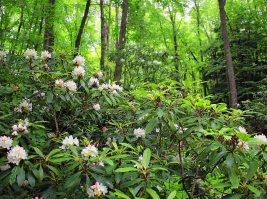The composition of understory plant communities is directly impacted by the abiotic and biotic conditions of an ecosystem, including: precipitation, temperature, the prevalence of invasive species and browse pressure. Climate change, forest fragmentation and other ecological stressors threaten to alter these abiotic and biotic conditions, which has the potential to undermine the resilience of these understory plant communities and the ecosystems that they are a part of. As such, monitoring the abundance, richness and distribution of particularly vulnerable understory plant species can provide valuable insight into the health of forest ecosystems.

There are 3 protocols that are used to monitor the indicator: Understory Community Composition. The first three studies on the list below are the most common methods of monitoring in the Northeast region.
The impacts of climate indicators can be measured using different ecological metrics of quantification. The metrics used in a study can affect how it is designed and the questions that it can answer. The information below shows the types of metrics and number of associated protocols that are captured by the data represented in this project.